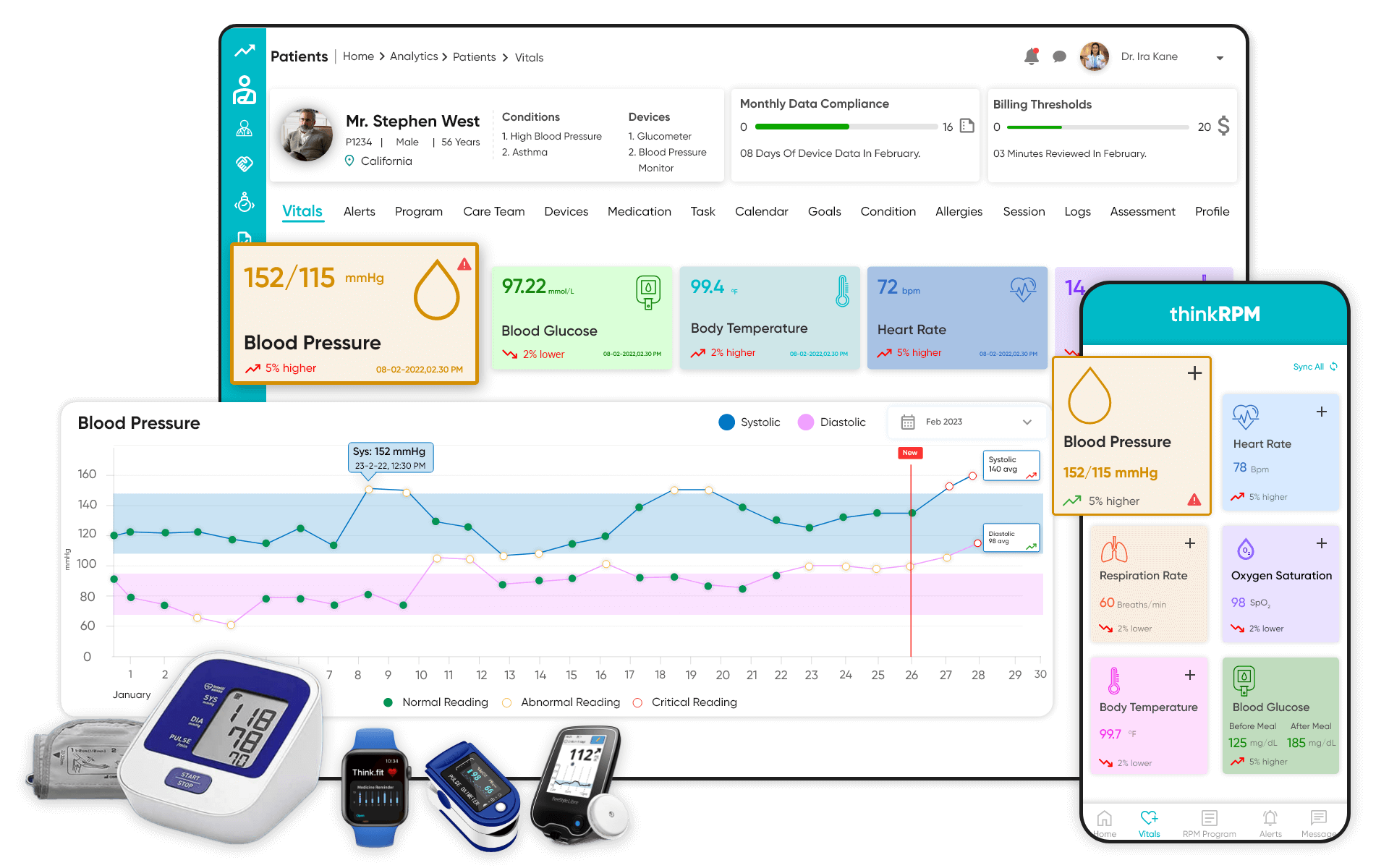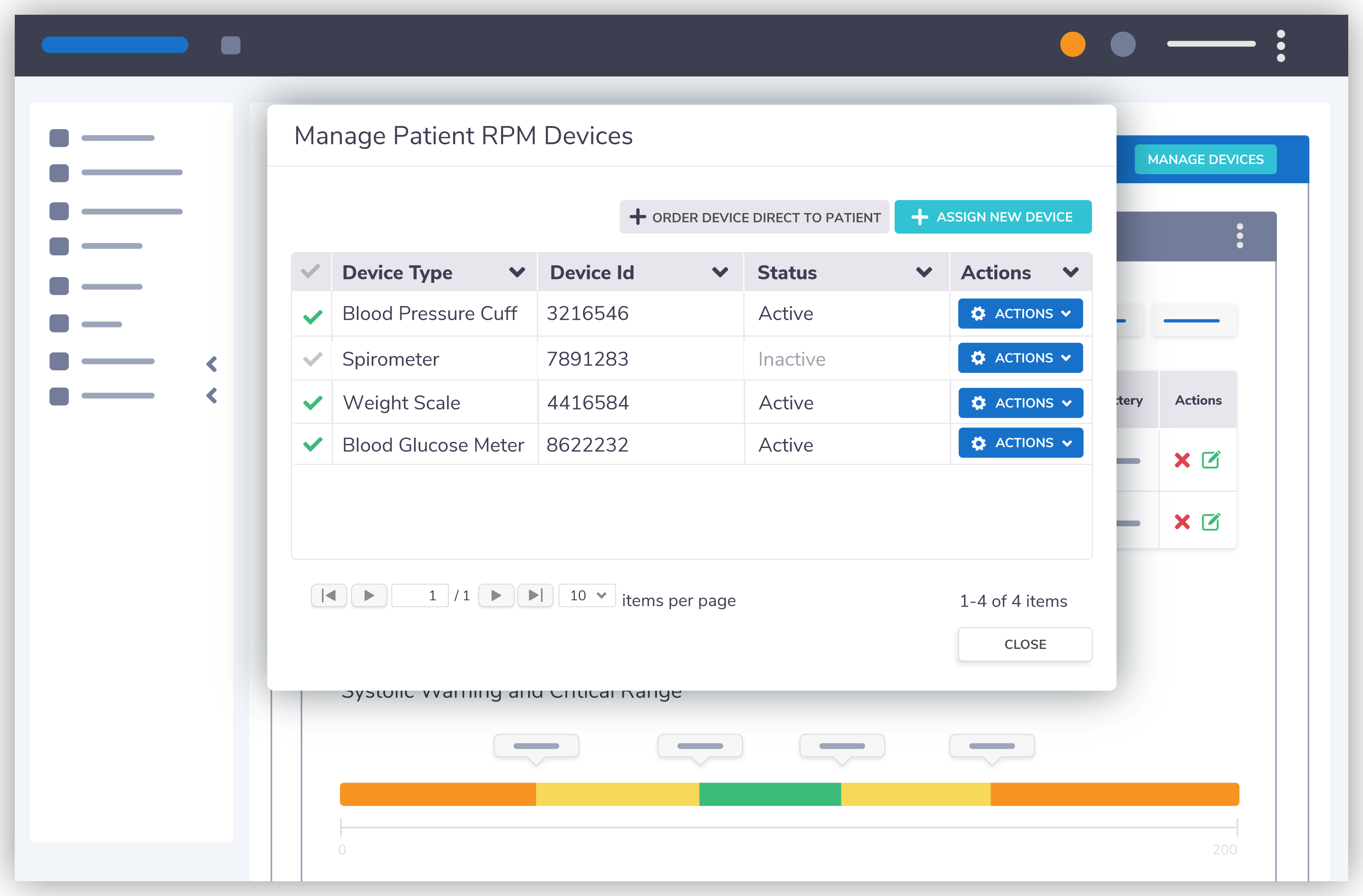Comprehensive Software for Remote Patient Monitoring: Improve Patient Treatment
Wiki Article
The Future of Health Care: Remote Patient Keeping An Eye On Simplified
As healthcare continues to progress, one area that holds enormous promise is remote patient monitoring. With an emphasis on boosting individual end results and streamlining healthcare distribution, remote tracking is positioned to reinvent the industry.Advantages of Remote Person Monitoring
Remote patient surveillance presents a wide range of benefits for both health care suppliers and individuals alike. Furthermore, remote individual monitoring improves the total top quality of care by providing a much more holistic and extensive sight of individuals' health and wellness condition beyond typical in-person visits.Additionally, remote individual monitoring can cause improved individual end results and fulfillment. People can delight in the convenience of getting treatment in the comfort of their own homes while still knowing that their health and wellness is being very closely monitored. This can lead to increased patient engagement and adherence to therapy strategies, ultimately causing much better health and wellness results. Furthermore, remote tracking can reduce the demand for frequent hospital visits, lowering medical care expenses for both people and providers. Overall, the advantages of remote person monitoring are clear, making it a useful tool in modern medical care shipment.
Modern Technology Driving Remote Tracking
In the world of modern-day medical care, technological developments play a pivotal role in driving the evolution and effectiveness of remote client tracking. The combination of innovative technologies such as wearable devices, mobile applications, and cloud-based systems has actually transformed the method medical care suppliers from another location keep track of and handle client wellness - remote patient monitoring platform. These technologies allow continuous real-time monitoring of vital signs, medication adherence, and other crucial health data, enabling for timely interventions and personalized care plansOne key innovation driving remote monitoring is the Internet of Things (IoT), which enables seamless connectivity between medical devices and healthcare systems. IoT gadgets such as smartwatches and wireless sensors transfer and collect patient data to centralized platforms, facilitating remote monitoring from anywhere in the world. Fabricated knowledge (AI) and artificial intelligence algorithms further boost remote tracking by assessing vast quantities of patient data to spot patterns, predict wellness patterns, and sharp doctor to possible concerns.
Influence On Health Care Distribution
With the combination of advanced modern technologies driving remote individual monitoring, the impact on medical care distribution is becoming transformative and progressively extensive. Remote client monitoring enables doctor to provide even more aggressive and customized like patients, causing enhanced wellness end results and decreased healthcare facility admissions. By remotely tracking vital indicators, symptoms, and medication adherence, healthcare specialists can intervene early, stopping problems and boosting the general high quality of treatment.In addition, remote monitoring boosts access to medical care services, especially for individuals in country or underserved areas. Clients can get constant tracking and assistance from their homes, eliminating the requirement for constant in-person visits. This not just conserves time and decreases expenses for both patients and medical care facilities yet likewise decreases the risk of exposure to infectious diseases, a crucial consideration in the current medical care landscape.
Furthermore, remote person surveillance makes it possible for healthcare carriers to much better focus on and assign resources treatment based upon real-time information. By determining high-risk people and interfering quickly, medical care delivery becomes more reliable and efficient, ultimately causing a more sustainable and patient-centered healthcare system.
Improving Person Outcomes

Furthermore, RPM allows for aggressive monitoring of chronic conditions, decreasing the likelihood of acute exacerbations and health center readmissions. Clients take advantage of raised comfort and convenience, as they can obtain treatment in their own homes while staying attached to their medical care suppliers. This continuous monitoring not just boosts person satisfaction yet also promotes a feeling of empowerment and interaction in their own health and wellness administration.
Future Trends in Remote Tracking
Embracing sophisticated technologies in remote person tracking is forming the future landscape of healthcare delivery. The future patterns in remote surveillance are anticipated to revolutionize the means medical care is supplied, making it a lot more effective and patient-centric. One considerable fad is the raised usage of wearable devices and sensors to collect real-time information, enabling healthcare suppliers to check individuals continuously without the need for frequent in-person sees. These devices can track crucial signs, medication adherence, and activity levels, supplying a detailed view of the client's wellness condition.
Furthermore, telehealth systems are becoming much more innovative, enabling virtual assessments, remote diagnosis, and remote individual checking all in one integrated system (remote patient monitoring software). This alternative method to remote tracking is streamlining medical care distribution, boosting individual satisfaction, and ultimately, improving general high quality of treatment
Verdict
In conclusion, remote patient surveillance offers many benefits in health care distribution, driven by improvements in technology. It has the potential to improve individual outcomes and revolutionize the method health care is supplied. Future trends in remote monitoring will remain to shape the landscape of medical care, giving chances for more individualized and reliable patient treatment.Remote client surveillance presents a plethora of benefits for both health care suppliers and patients alike. In addition, remote client tracking boosts the general top quality of care by supplying a more comprehensive and holistic sight of individuals' health and wellness condition beyond conventional in-person visits.
Additionally, remote individual monitoring can lead to enhanced client results and fulfillment. Remote individual surveillance allows medical care service providers to offer more positive and best remote patient monitoring software customized care to patients, leading to enhanced wellness end results and minimized health center admissions. Remote person tracking (RPM) plays a considerable function in boosting individual outcomes by giving constant, real-time information that enables medical care suppliers to intervene quickly and readjust therapy plans as required.
Report this wiki page